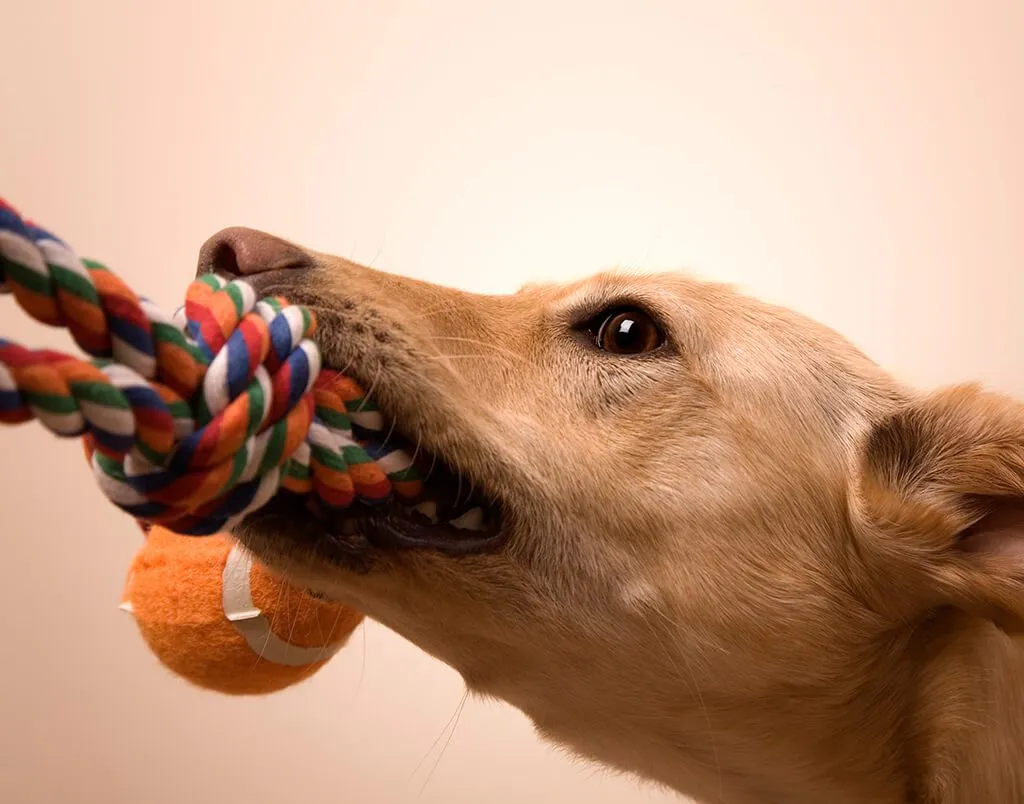As a dog owner, watching your puppy go through teething can be challenging. Starting around three weeks old, puppies experience discomfort as their baby teeth emerge, and again at about 12 weeks when those milk teeth fall out and adult ones replace them. By six to seven months, most puppies have their full set of permanent teeth. During this puppy teething phase, providing the right puppy teething toys is essential to soothe sore gums and redirect their natural chewing instincts away from your furniture or hands.
Chewing helps puppies explore the world, relieve pain, and develop jaw strength, but choosing unsafe options can lead to choking, broken teeth, or digestive issues. According to veterinary experts, the key is selecting durable, flexible toys suited to your puppy’s size and breed while avoiding hazards. This guide covers toys to steer clear of and the best puppy teething toys recommended by vets, ensuring a safer teething period. For puppies around 12 weeks, check out our picks for the best toys for 12 week old puppy.
Toys to Avoid During Teething
Veterinary dentists strongly advise against hard items that won’t flex under pressure. These can fracture delicate puppy teeth or cause mouth injuries. Common culprits include nylon bones, rawhide chews, real antlers, or anything rigid like wood or hard plastics—essentially, “anything that won’t bend,” as experts put it.
Skip toys mimicking household items you don’t want chewed, such as faux shoes or socks, as they confuse boundaries. Also, avoid playthings with:
- Long strings, ribbons, or feathers that can tangle or be swallowed
- Internal squeakers that might break free
- Foam stuffing, which expands if ingested
- Sharp edges or corners that could cut gums
Toys smaller than your puppy’s mouth heighten choking risks, so always size up appropriately. Prioritizing safety prevents emergency vet visits, which are common during teething.
 Puppy playfully chewing on a strawberry-shaped toy
Puppy playfully chewing on a strawberry-shaped toy
Safe and Effective Puppy Teething Toys
No toy is 100% risk-free—puppies are determined chewers—but vet-approved options minimize dangers when supervised. Always inspect toys regularly, discarding any with loose pieces, cracks, or heavy wear. Tailor choices to your puppy’s breed and size; for example, aggressive chewers like Labs may need tougher materials. Consult your vet for personalized picks, drawing from their expertise in canine dental health.
High-quality puppy teething toys soothe gums, entertain, and teach appropriate chewing. Here’s what works best:
Rope Toys for Tugging and Chewing
Rope toys excel for interactive play, mimicking prey for natural tugging instincts. Opt for premium, braided cotton ropes without loose ends—cheap versions fray easily, risking ingestion. They’re gentle on emerging teeth and promote dental cleaning through friction.
Supervise closely, as even durable ropes need rotation. Quality matters across all toys: better materials mean longer life and safer fun.
Durable Rubber Chew Toys
Rubber toys top the list for teething relief due to their bounce and give. The ideal firmness passes the “fingernail test”—your nail should dent it without effort, ensuring it’s not too rigid for puppy jaws.
Popular for all breeds, these withstand vigorous gnawing. For puppies that chew nonstop, explore best interactive dog toys for aggressive chewers.
 Puppy tugging on a colorful rope toy
Puppy tugging on a colorful rope toy
Frozen and Treat-Filled Options
Freezing enhances relief by numbing gums and reducing swelling. Freeze-safe rubber toys stuffed with puppy-safe treats or peanut butter (xylitol-free) keep pups occupied for hours. Teething-specific treats dissolve safely, avoiding hard remnants.
Budget hack: Knot a wet washcloth, freeze it, and offer under supervision—many vets endorse this for mild relief. Avoid plain ice cubes if your vet advises against them, as they can damage enamel.
Top Vet-Recommended Specific Toys
Based on durability, safety, and user feedback, these stand out:
- KONG Puppy Toy: Best overall; stuffable and freezable for extended play.
- Nylabone Puppy Chew: Affordable entry-level option with flavors.
- Apasiri Chew: Ultra-durable for power chewers.
- Nylabone Puppy Starter Kit: Value pack for variety.
- Benebone Wishbone: Flavored nylon alternative, bacon-scented favorite.
- CHIWAVA Standing Stick: Fun, upright design for solo play.
- Benebone Zaggler: Interactive with rattle for engagement.
- Nylabone Chill & Chew: Cooling gel soothes gums best.
- Petstages Mini Bone Tug: Multi-use for fetch and chew.
- ZHEBU Dog Chew: Textured for natural cleaning.
For larger breeds, consider best long lasting chew bones for large dogs. Small breeds might prefer best chew bones for french bulldog puppies.
Keeping pups busy extends to everyday toys like dog toys to keep them busy.
Additional Teething Tips from Vets
Build good habits by introducing toothbrushing early. Use dog-specific brushes and enzymatic toothpaste—never human products, which are toxic. Start slow: Let your puppy sniff and lick the brush to build comfort. Regular brushing prevents plaque, a top dog health issue.
This also trains them to release items from their mouth safely, reducing bite risks during play. Vets often demonstrate techniques during checkups.
Does Chewing Ever Stop?
Chewing is a lifelong behavior for stress relief, boredom busting, and exploration—intensity peaks during teething but eases by 18 months. Persistent aggression warrants a vet check for underlying issues like anxiety.
Final Thoughts on Puppy Teething Toys
Selecting the right puppy teething toys protects your pup’s health while making teething manageable. Combine supervision, quality choices, and vet guidance for success—from rope pulls to frozen KONGs. Monitor play, rotate toys, and prioritize dental care for a happy, healthy dog.
Schedule a vet visit for tailored advice and exams. Ready for more tips? Explore our guides on puppy care today!
